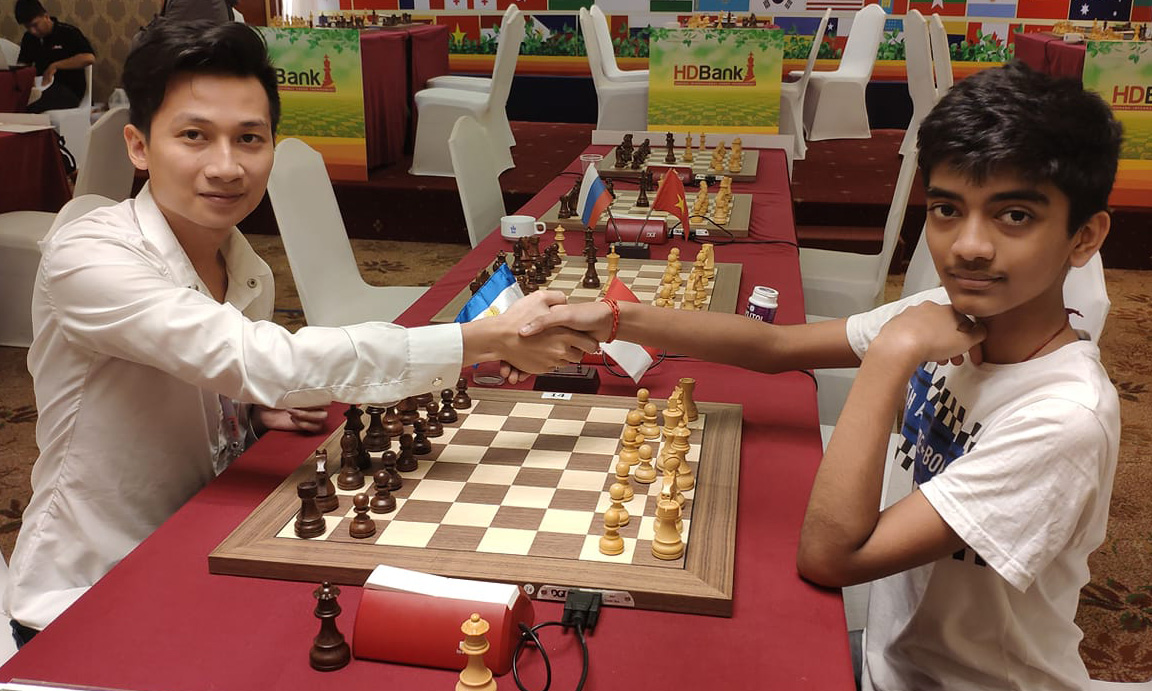A friendly, easy-to-read guide to every chess rule beginners and club players should know. Learn the basic moves, special rules, how games end, and the rare cases that often confuse people. Placeholders are provided for your deep-dive articles.
1. Introduction
Chess is simple to learn. It is hard to master. The rules are mostly straightforward. But a few rules are tricky. They cause confusion at clubs and tournaments. This guide collects every rule you need. I keep sentences short. I keep the tone friendly. Use the placeholders to link to your detailed posts.
2. The Chessboard and Pieces (Basics)
A chessboard has 64 squares. They alternate light and dark colors. The board is set so each player has a light square on their right corner. Each side starts with 16 pieces: one king, one queen, two rooks, two bishops, two knights, and eight pawns.
Setup quick reference:
- White pieces start on ranks 1 and 2.
- Black pieces start on ranks 7 and 8.
- Queen goes on its color: white queen on a light square, black queen on a dark square.
3. How Each Piece Moves (Quick Guide)
Keep these moves in mind. They are the core of chess.
- King: Moves one square any direction. Cannot move into check.
- Queen: Moves any number of squares in straight lines and diagonals.
- Rook: Moves any number of squares straight (files and ranks).
- Bishop: Moves any number of squares diagonally.
- Knight: Moves in an L-shape: two squares in one direction and one perpendicular. Jumps over pieces.
- Pawn: Moves one square forward. On its first move, can move two squares. Captures diagonally forward.
4. Pawn Rules (Moves, Captures, Promotion)
Pawns seem simple. They are not.
Movement and capture
- A pawn moves forward to an empty square.
- It captures one square diagonally forward.
- On the pawn’s first move, it may move two squares forward if both squares are empty.
Promotion
When a pawn reaches the farthest rank (the 8th rank for White, 1st for Black), it must promote. That means you replace the pawn with a queen, rook, bishop, or knight of the same color. Most players choose a queen. But you may choose any piece, even if that piece was already captured.
Practical notes
- Promotion is immediate. The move ends after you replace the pawn.
- If you promote to a queen, it is called “queening.”
- You can promote underpromote to a knight, which creates tricky checks.
5. Special Moves: Castling, En Passant, and Pawn Promotion
Special moves often trip players up. Learn them well.
5.1 Castling
Castling is the only move that moves two pieces at once: the king and a rook. It helps safety and development.
Conditions to castle:
- Neither the king nor the rook involved has moved before.
- No squares between the king and rook are occupied.
- The king is not in check.
- The king does not pass through a square that is attacked.
- The destination square of the king is not attacked.
There are two types:
- Kingside (short) castling: King moves two squares toward the rook on h-file. Rook moves to the square the king crossed.
- Queenside (long) castling: King moves two squares toward the rook on a-file. Rook moves to the square next to the king on the other side.
5.2 En Passant
En passant is a special pawn capture. It happens when a pawn moves two squares from its starting square and lands next to an opponent pawn. The opponent may capture as if the pawn moved only one square. This capture must be done immediately on the next move, or the right to capture is lost.
Example short:
- White pawn on e5. Black pawn moves d7-d5. White may capture d5 en passant by moving exd6.
5.3 Promotion (covered above)
Remember this is a special move because you change the piece type.
6. Illegal Moves and the Touch-Move Rule
Illegal moves
An illegal move breaks the rules. Examples:
- Moving a knight like a bishop.
- Leaving your king in check after you move.
- Making a move not allowed by the piece.
At casual play, players often simply take back illegal moves. At tournaments, rules are strict. The arbiter decides penalties.
Touch-move rule
If you touch a piece intentionally on your turn, you must move it if it has a legal move. If you touch an opponent’s piece, you must capture it if capture is legal. This rule applies in most over-the-board games and tournaments.
Exceptions:
- Adjusting pieces: say “J’adoube” or “I adjust” before touching a piece.
- If your hand slips, the arbiter may rule differently.
7. How Chess Games End: Checkmate, Resignation, Draws
Checkmate
Checkmate is the goal. It is when the opponent’s king is in check and there is no legal move to escape. The game ends immediately.
Resignation
A player may resign at any time. Resigning is common when the position is hopeless. It shortens play and conserves energy.
Draws
A draw means no winner. There are several ways to draw. Some are common. Some are rare. We will go into detail in the next section.
8. Draw Rules in Detail
Draw rules are important for both casual and competitive players.
8.1 Stalemate
If the player to move has no legal move and their king is not in check, the game is a stalemate. That is an automatic draw.
Example: If you have only your king left and your opponent blocks all your moves without checking you, the game can end in a draw.
8.2 Threefold Repetition
If the same position occurs three times with the same player to move and all possible moves the same (including rights to castle and en passant), a player can claim a draw. The claim must be made on your move by notifying the arbiter or your opponent depending on rules.
8.3 Fivefold Repetition and Automatic Draw (in some rules)
In some tournament rules, fivefold repetition results in an automatic draw without a claim. Check tournament rules to be sure.
8.4 50-Move Rule
If 50 consecutive moves by both sides pass without any pawn move or capture, a player can claim a draw. This is to prevent endless maneuvers with no progress.
Note: There are rare exceptions in tablebases or composition; sometimes longer sequences are required to force mate. Modern rules include ways to handle these cases in tournament play.
8.5 Insufficient Material
If neither player has sufficient material to mate the opponent by any legal sequence, the game is a draw. Common insufficient setups:
- King vs. king.
- King and bishop vs. king.
- King and knight vs. king.
- King and bishop vs. king and bishop of the same color (rare rules vary).
8.6 Draw by Agreement
Players may agree to a draw at any time during the game. This is very common in tournament settings.
Practical tips about draws
- Learn to claim properly. If you miss the chance, you may lose the draw.
- Keep track of moves and pawn moves when 50-move or threefold claims are possible.
- Use notation to prove positions if necessary.
9. Notation and Recording: Algebraic and FEN Basics
9.1 Algebraic notation
Algebraic notation describes moves in a short standard form. Example:
- e4 means pawn to e4.
- Nf3 means knight to f3.
- O-O means kingside castle.
- O-O-O means queenside castle.
- exd5 means pawn on e-file captures on d5.
Recording moves is required in many tournaments. Keep it neat. Write both players’ moves per move number.
9.2 FEN (Forsyth–Edwards Notation)
FEN is a way to record a full board position in a single line. It is useful for database work, puzzles, and online posts. Learn the structure if you post games or use chess software.
10. Tournament Rules and Etiquette (Short Guide)
Tournament chess has rules beyond moves. Here are the most essential points.
Before the game
- Arrive early.
- Check seating and clocks.
- Set up pieces and boards correctly.
During the game
- Touch-move rule applies.
- Use the clock properly: press after each move.
- No distracting the opponent. Keep noise down.
- Phones must be off or in airplane mode. Many events ban them in the playing hall.
If you need an arbiter
- Call the arbiter in case of disputes.
- Do not disturb play. Use discretion.
After the game
- Shake hands (in many events).
- Score the result accurately.
11. Ratings, Points, and Tournament Systems (Basics)
Ratings measure strength. They affect pairings and titles.
11.1 Elo and similar systems
Elo is a common formula to rate players. You gain points for wins and lose points for losses. The amount depends on your opponent’s rating.
11.2 Tournament scoring systems
- Win = 1, Draw = 0.5, Loss = 0 is common.
- Some events use match points, tiebreaks, or accelerated systems.
11.3 Titles and norms
Earning a title takes performance in rated events. Norms, minimum ratings, and standards vary by federation.
12. Rare and Edge Cases You Might Meet
Chess has rare positions that confuse players. Here are some to watch for.
12.1 Underpromotion to avoid stalemate
Sometimes promoting to a knight or rook saves the game. The queen is not always best.
12.2 Perpetual checks (not a formal rule in modern chess)
Perpetual check is when one side forces the other into repeated checks. Today, such repetitions may be claimed as a threefold repetition draw if the same position repeats.
12.3 Legal mate but flagged on the clock
If your opponent’s time runs out, but you do not have mating material, the game is a draw. If you do have mating material, you win on time unless the opponent can force mate by any legal sequence. Tournament rules vary, so learn the local rules.
12.4 Castling rights and piece moves that change rights
If a rook moves, you lose castling rights with that rook. If you move the king, you lose both rights. If a rook is captured, you lose castling on that side.
12.5 Claiming a draw in online play
Online platforms have automated detection for repetitions and 50-move situations. Know how to claim or verify in the platform you use.
13. FAQs: Short Answers to Common Questions
Q: Can you castle out of check?
A: No. You cannot castle if your king is currently in check.
Q: Can you castle through check?
A: No. The king cannot pass through an attacked square while castling.
Q: Is stalemate a win?
A: No. Stalemate is a draw.
Q: If I run out of time but my opponent has only a king, do I lose?
A: No. If your opponent cannot possibly checkmate you by any legal sequence, the game is a draw on time. Otherwise, you lose.
Q: Can a pawn capture en passant after the opponent promotes?
A: The right to capture en passant expires if not taken immediately on the very next move. Promotion may change the position, but en passant must be exercised immediately when available.
Q: What happens if I accidentally knock over pieces?
A: Announce “I adjust” before touching pieces if you only want to straighten them. Otherwise touch-move applies.
Q: Can two bishops checkmate alone?
A: No. Two bishops plus king can mate a lone king only if they are on opposite colored squares? Actually two bishops and a king can force mate against a lone king, with correct play. But bishop+king vs king is insufficient.
Q: Is en passant common?
A: No. It is rare, but it matters in opening theory and endgames. Learn to spot it.
Q: Are draw offers binding?
A: In most rules, a draw offer is binding only if both players agree. If refused, play continues.
14. Conclusion — What to Remember
- Learn piece moves first. Master pawns and king safety next.
- Know the special moves: castling, en passant, promotion.
- Track moves to claim draws correctly. Use notation.
- In tournaments, follow touch-move and clock rules. Call the arbiter when needed.
- Study rare cases so surprises don’t cost you a game.
This pillar page is your hub. Use the detailed articles for deep dives. I wrote this guide to be clear and short. Now go practice these rules in real games.
15. Appendix: Quick Rules Cheat Sheet
- Board setup: white on light square.
- King: one square any direction.
- Queen: any direction, any distance.
- Rook: ranks and files.
- Bishop: diagonals.
- Knight: L-shape, jumps.
- Pawn: forward move, diagonal capture, two-square first move, promotion on last rank.
- Castling: king and rook move together; king cannot be in/through check.
- En passant: capture the pawn that moved two squares immediately on next move.
- Draws: stalemate, threefold repetition, 50-move rule, insufficient material, agreement.
- Illegal move: may be penalized; call arbiter.
- Touch-move: touching forces move; say “I adjust” if fixing pieces.

I’m Xuan Binh, the founder of Attacking Chess, and the Deputy Head of Communications at the Vietnam Chess Federation (VCF). My chess.com and lichess rating is above 2300. Send me a challenge or message via Lichess. Follow me on Twitter (X) or Facebook.






